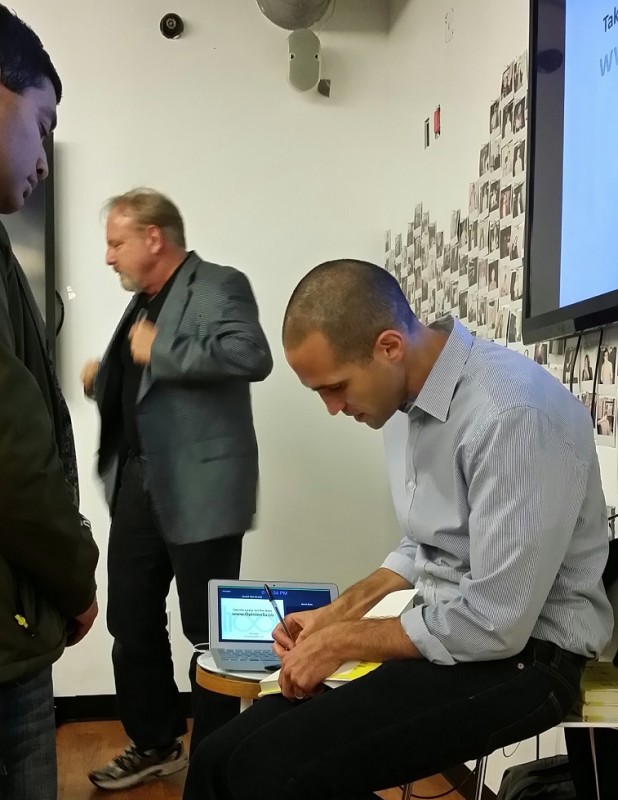Nir Eyal talks about his latest book, ‘Hooked: How to build habit-forming products

By Dennis Clemente
How do you like some structured thinking to go with your startup brainstorming?
The New York tech meetups happening in the city every night are wholly unstructured. It’s just a channel for startups to quickly demo their product and, even in some cases, get feedback from startups, right on the spot. Some presentations may do better in the on-the-fly, off-the-cuff talks, but there’s always no guarantee. What’s guaranteed is how you get the chance to watch a startup founder talk about a work in progress.
Last November 4, structure came to the Alley NYC Meetup when Nir Eyal launched his book there that day called “Hooked: How to Build Habit-Forming Products.” Eyal certainly gets my nod for being one of the most lucid presenters in the NY tech meetups this year and it’s perhaps on account of how he has formulated a clear basic framework on the subject for a couple of years now, which was evident in his presentation.
It also helps that he has taught at the Stanford Graduate School of Business and Hasso Plattner Institute of Design. His writing on technology, psychology and business appears in the Harvard Business Review, The Atlantic, TechCrunch, and Psychology Today. Nir blogs at NirAndFar.com.
The book is a must-read if you are designing a new startup or leading a product development team, as it talks about behavioral uses of technology, apps and social media while also leaving room for us to tackle the hard ethical questions on forming habits. His basic framework is as follows:
1. Trigger
2. Action
3. Variable reward
4. Investment
Triggers: (Internal and External).
Do you know your user or customer’s internal trigger? Find out your user’s itch. People always look for associations, solutions and patterns. It cues the user for the next action, telling what the user what to do next. Look for associations. Ask yourself, when you are bored, what do you do? You go to YouTube? Do you know your trigger? Do they fear missing out on something?
Action.
It is the simplest behavior in anticipation of a reward. Once you have them using your app, what can they do to get a reward of some sort? He cited Facebook’s “Like.” That is a powerful reward that makes people keep coming back to the social network.
Variable reward.
This is social validation among friends or personal gratification. For example, there are 5,000 questions answered daily on Stackoverflow, which indicate how people like to share their knowledge without asking for anything in return, contented as they are that it makes them feel good helping people. People also like feeling a sense of self-achievement or mastery, consistency and control.
Investment.
Users invest for future benefits. Investments store value, improving the product with value. Unlike a chair which depreciates in value, your startup should appreciate in value. The more followers you have for example, the better your value.
Also check out his blog, nirandfar.com